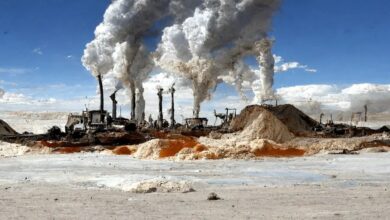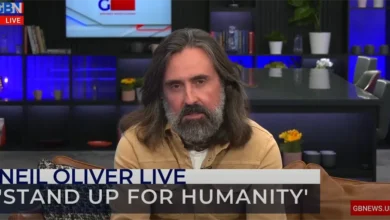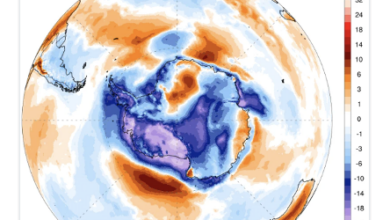NETZERO is impeding progress on UN Sustainable Development Goals

by Judith Curry
“Working in global energy and development, I often hear people say, ‘Because of climate, we just can’t afford for everyone to live our lifestyles.’ That viewpoint is worse than patronizing. It’s a form of racism, and it’s creating a two-tier global energy system, with energy abundance for the rich and tiny solar lamps for Africans.” – Kenyan activist and materials scientist Rose Mutiso
“To deny the developing world access to the very infrastructure that has propelled us forward, all in the name of an uncertain future, is not environmentalism, but neocolonialism masquerading as virtue.” – Earth Scientist Matthew Wielicki
100 years ago, the global population was 2 billion. Over the past century, the population has increased to 8 billion, life expectancy has more than doubled, a much smaller percent of the global population is living in poverty, global wealth has increased by a factor of 20, agricultural productivity and yields have increased substantially, and a far smaller fraction of the population die from extreme weather and climate events. Hannah Ritchie’s ourworldindata.org provides fascinating data on global progress.
And all this has occurred during a period where the global temperatures have increased by about 1oC. The UN has dropped the extreme emissions scenarios (RCP8.5 and SSP5-8.5) from use in policy making, and the UNFCCC COP27 worked from an estimated 2100 warming of 2.5ºC.[1] The 2023 IEA Roadmap to NetZero Stated Policies Scenario (STEPS) projects a rise in average global temperature of 2.4ºC by 2100.[2] When plausible scenarios of natural climate variability and values of climate sensitivity on the lower end of the IPCC range are accounted for, the expected warming could be significantly lower.
So our current best estimates of global warming by 2100 indicate that we will likely be close to, or within, the 2ºC target by 2100, based on our current understanding. So we are looking at an additional 0.8 to 1.2oC warming over the remainder of the 21st century, according to our current understanding. Natural climate variability is of course a wild card that can cut both ways, but the portion of the 21st century warming that the UN is hoping to control is order of 1oC.
The world has already shown that it can thrive under a warming rate of 1oC/century. To support continued human development and progress in the 21st century, there is widespread international agreement on the UNSDG Sustainable Development Goals, which provides a ranked list of 17 goals.[3] The goals related to climate and energy policy include (with numerical ranking):
- No poverty
- No hunger
- Affordable and clean energy
- Industry, innovation and infrastructure
- Climate action
There is growing recognition that climate change is as much a development problem as it is an environmental one. Development deals with the alleviation (or eradication) of poverty. More recent notions of development include sustainable development and climate resilient development, which emphasize economic development without depletion of natural resources.
Tensions arise when the “sustainable” part—which includes no new fossil fuel-based energy systems—conflicts with poverty eradication and other sustainable development goals.
Inconsistency of Net Zero by 2050 with UN Sustainable Development Goals
A recent UN Report on Progress Towards Sustainable Development Goals states:[4]
“Under current trends, 575 million people will still be living in extreme poverty in 2030, and only about one third of countries will meet the target to halve national poverty levels.”
“Shockingly, the world is back at hunger levels not seen since 2005, and food prices remain higher in more countries than in the period 2015–2019.”
“At the current rate of progress, renewable energy sources will continue to account for a mere fraction of our energy supplies in 2030, some 660 million people will remain without electricity, and close to 2 billion people will continue to rely on polluting fuels and technologies for cooking.”
Neglecting these sustainability objectives in favor of rapidly reducing CO2 emissions is slowing down or even countering progress on the most important Sustainable Development Goals.
Efforts to rapidly restrict the use of fossil fuels is hampering the #1 goal of poverty reduction in Africa and is restricting Africa’s efforts to develop and utilize its own oil and gas resources (goal #7), as funds previously used for development are being redirected to CO2 mitigation (goal #13).[5]
The #2 goal of no hunger is being hampered by food prices and availability are being worsened by climate mitigation efforts (goal #13), such as disincentives for fossil fuel development causing less supply and higher prices of fuels necessary for agriculture, biofuels (e.g. corn and seed oils), restrictions on livestock, and restrictions on fertilizer.
Industry and infrastructure (goal #8) require steel and cement, which are currently produced by fossil fuels. Until such a time when steel and cement can be produced economically without fossil fuels, restricting fossil fuel access particularly in developing countries to support CO2 mitigation targets (goal #13) is hampering the development of industry and infrastructure, including clean energy projects.
Should one element of Goal 13, related to net-zero emissions, trump the higher priority goals of poverty and hunger and the availability of energy? Not if human well-being, flourishing and thriving are the objectives. Climate policy driven by the perceived urgency of eliminating fossil fuels and without regard to other needs and trade-offs is itself dangerous.
Conflict between NETZERO, Development and Adaptation
There’s no such thing as a low energy, rich country.
Economic development and resilience in underdeveloped countries are being slowed down by a growing emphasis on linking international development funds to reducing emissions. This emphasis comes at the expense of development funds that have historically been targeted for poverty reduction.
Resilience to weather and climate extremes requires adaptive capacity. The UN Sendai Framework on Disaster Risk Reduction 2015–2030 focuses on the adoption of measures that address all dimensions of disaster risk—hazard, exposure, vulnerability and coping capacity.[1] The Sendai Framework includes seven targets intended to define and measure progress towards its overall goal to increase resilience by reducing risk. The first four targets are to substantially reduce disaster impacts: mortality, number of people affected, economic loss, and damage to critical infrastructure and disruption of basic services. The other three targets are to substantially increase the adoption of national and local disaster risk reduction strategies, international cooperation to developing countries and access to multi-hazard early warning systems.[2]
Now, more than halfway through the period for the Sendai Framework (2015–30), none of the Sendai Framework’s “substantially reduce” targets are on track to be achieved by 2030. Instead, direct economic loss and damage to critical infrastructure having increased substantially over the past decade. Adoption of multi-hazard early warning systems have been the most successful element of the Framework, although these efforts need to be scaled up and made more effective. While disaster-related financing has increased since 2010, most of the resources have supported activities to respond to and recover from disasters.[3]
Simply put, people are considerably less exposed to weather and climate shocks if they aren’t poor. Creating more resiliency in poor countries will require energy-intensive investments in housing, transportation infrastructure, and agricultural technology. Economic development requires the availability of cheap, reliable, and abundant energy.[4]
The World Bank and other development banks provide loans and grants for development projects, and the International Monetary Fund (IMF) helps poor countries overcome currency crises and keep their finances stable. However, these institutions are under pressure from their donor governments to focus on climate change—specifically, to reduce emissions.[5] The IMF recently proposed the creation of a US$50 billion Resilience and Sustainability Trust to help countries tackle climate change, where support would be contingent on recipient countries’ plans to reduce emissions.[6] Similarly, the World Bank has unveiled a climate action plan promising to align all future projects with the Paris Agreement to slash emissions.[7]
As a result, international funds for development are being redirected away from reducing poverty and increasing resilience, and towards reducing carbon emissions. By limiting development of electric power, this redirection is exacerbating the harms from weather hazards and climate change for the world’s poor. Development and poverty reduction require abundant and cheap energy, and natural gas is regarded as the best near-term solution for most countries. Working against this need in developing countries, UN Secretary-General António Guterres has called on countries to end all new fossil fuel exploration and production. The United Kingdom, the United States, and the European Union are aggressively limiting fossil fuel investments; the World Bank, the International Monetary Fund and other development banks are being pressured to do the same. The African Development Bank is increasingly unable to support large natural gas projects in the face of European shareholder pressure.[8]
Limiting the development of fossil fuel projects is profoundly hampering development in Africa. Africa is starved for energy; sub-Saharan Africa’s one billion people have the power generation capacity that is less than the United Kingdom with 67 million people. Natural gas is needed not only for power, but also for industry and fertilizer and for cleaner cooking to avoid loss of life from indoor air pollution. One cannot overemphasize the significance of natural gas as a transition fuel in developing countries, especially in Africa. The irony is that even tripling energy use and emissions in sub-Saharan Africa driven by natural gas would add a meager 0.6 % to overall global emissions.[9] The IEA projects that Africa won’t exceed 4 percent of global CO2 emissions by 2050 regardless of energy scenario.[10]
Leaders from developing countries have been outspoken in criticizing these changes in international funding practices. Ugandan President Yoweri Museveni warns that by pushing climate mitigation on African countries, the West will “forestall Africa’s attempts to rise out of poverty.”[11] A widely viewed Technology, Entertainment, Design (TED) Talk by Kenyan energy expert Rose Mutiso characterized forcing emissions mitigation on the world’s poor that is widening economic inequality as equivalent to “energy apartheid.”[12]
Africa’s fragile progress in recent decades could be undone by international efforts to curb investments in all fossil fuels. However, these same countries that are working to restrict fossil fuel investments in Africa include natural gas in their own multidecade plans to transition to clean energy. The greatest hypocrisy is that some of the largest private European and US firms are developing natural gas in Ghana, Mozambique, Nigeria, and Senegal to export to Asia and Europe, since it can’t be used in the countries of origin for lack of infrastructure.[13]
Prioritizing SDGs over Net-Zero
Every dollar spent on reducing carbon emissions can have a significantly greater impact if directed into education, medical services, food security, and critical infrastructure. To promote human well-being and thrivability, climate action in the poorest countries should concentrate on reducing poverty, increasing energy access, and building resilience via investments in housing, transportation, infrastructure, and agricultural technology.[14]
Wise climate policy needs to recognize that there are no climate “cliff-edges” in the climate system, that there is a plurality of values at play, and that a plurality of goals should be accommodated in policy-making. In this spirit, climate scientist Mike Hulme has called for “climate pragmatism,” which would prioritize SDGs over Net-Zero. This approach “would not necessarily deliver the objective of the Paris Agreement: stabilizing global temperature at between 1.5C and 2C.” Recognizing that trade-offs between different SDGs and between SDGs and stabilizing global temperature are unavoidable, Hulme posits that “[i]t is quite easy to imagine future worlds in which global temperature exceeds 2C of warming which are ‘better’ for human well-being, political stability and ecological integrity, for example, than other worlds in which – by all means and at all costs – global temperature was stabilized at 1.5C.” In relation to the tension between zero-carbon and the need for affordable energy, Hulme states:
“Several of the SDGs – for example, eradicating poverty (SDG#1), securing quality education (SDG#4), ensuring decent work and economic growth (SDG#8) – will require the expansion of affordable and reliable energy services for billions of people, not least in Africa and South Asia. Only some of these services can be delivered by zero-carbon energy.”[6]
How to respond to so-called the climate “crisis” in the midst of genuine crises associated with food and energy shortages and the humanitarian crisis in Ukraine is best reflected by the response of the New Zealand government. In defending its decision to issue fossil fuel prospecting permits in spite of declaring a climate emergency, the New Zealand government stated that the climate crisis was “insufficient” to halt oil and gas exploration.[15] Climate change is indeed a crisis of insufficient weight that will be increasingly ignored by many countries as they grapple with the basic human needs for energy and food.
There is no human right to a safe or stable climate
The UN Human Rights Committee (UNHRC) has stated that:[7]
“… environmental degradation, climate change and unsustainable development constitute some of the most pressing and serious threats to the ability of present and future generations to enjoy the right to life.”
Reference is further given to a 2019 Report written by the UN Special Rapporteur on Human Rights, which concluded the following:[8]
“There is now global agreement that human rights norms apply to the full spectrum of environmental issues, including climate change.”
No attempt has been made by the UN to create international support for a new human right to be protected from climate change. Such a right is neither implicit or explicit in the UNFCCC Paris Agreement.
Even if Net Zero objectives were achieved globally by 2050, the climate would continue to change from natural weather and climate variability: volcanic eruptions, solar effects, large-scale oscillations of ocean circulations, and other geologic processes. Further, given the inertia in the climate system (particularly oceans and ice sheets), it would be many decades before there was any noticeable change in extreme weather/climate events and sea level rise after Net Zero was achieved.
Exaggeration of the risks from human-caused climate change leads to serious contradictions in context of beliefs that human rights offer protection against the impacts of dangerous climate change. Specifically with regards to the right to life, global mortality (per 100,000 people) from extreme weather and climate events have declined by 99% since 1920.[9] Between the period 1980 and 2016, global mortality (per 100,000 people) from extreme weather and climate events has dropped by 6.5 times.[10] For the mortality statistics since 1980, there is a clear negative relation between vulnerability and wealth.[11] Thus, an increase in wealth provides much greater and much more certain protection against climate-related risks than emissions reduction.
The trend in mortality statistics does not mean that weather and climate disasters have become less frequent or less intense. The trend implies that the world is now much better at preventing deaths from extreme weather and climate events than in the past. This has been accomplished through increasing wealth, which provides better infrastructure, greater reserves, advance warnings, and greater recovery capacity.
Towards an Energy Transition that Supports Sustainable Development Goals
Yes, we can seek to lower emissions as low as reasonably practical, ideally while minimizing our regrets and maximizing our opportunities through the energy transition. But we should not pretend that we are controlling the climate. And people are less inclined to act on the energy transition if they can’t imagine the endpoint, and can’t see themselves better off in the future.
The IEA Net Zero Roadmap makes a fundamentally important statement about the transition to Net Zero. Clean energy investment and demand reductions will drive the energy transition, not a premature removal of fossil fuel resources:
“A large and sustained surge in clean energy investment is what removes the need for new fossil fuel projects in the NZE Scenario: reducing fossil fuel supply investment in advance of, or instead of, policy action and investment to reduce demand would not lead to the same outcomes. Prolonged high prices would result if the decline in fossil fuel investment in this scenario were to precede the expansion of clean energy and the action to cut overall energy demand that are also set out in this scenario. This would reduce the chances of an orderly transition to net zero emissions by 2050 and underlines the importance of action to secure the kind of surge in investment in clean energy and the demand reductions that are seen in the NZE Scenario.”[12]
As the IEA emphasizes, clean energy development reduces the demand for fossil fuels; forced reduced supply of fossil fuels, on the other hand, causes adverse and counter-productive effects. In other words, clean energy supply precedes fossil fuels phase-out, not the other way around. The IEA prioritizes an orderly transition that aims to safeguard energy security through strong and coordinated policies and incentives that enable all actors to anticipate the rapid changes required, and to minimize energy market volatility and stranded assets.[13] The IEA recognizes that coal-to-gas switching is reducing emissions, particularly in the U.S.[14]
The rapid transition of electric power systems away from fossil fuels to meet net-zero emissions targets is introducing substantial new risks to electric power systems. A transition of the electric power system that produces reduced amounts of electricity, less reliable electricity and/or more expensive electricity to achieve net-zero goals would be a tourniquet that restricts the lifeblood of modern society and hampers development and will thwart sustainability efforts.
The debate is then between imposition of certain, intolerable risks from the rapid transition away from fossil fuels, versus the highly uncertain future impacts from climate change. This conflict can be resolved by relaxing the time horizon for reducing CO2 emissions while maintaining energy abundance, reliability and security through the energy transition.
The energy transition can be facilitated with minimal regrets by:
- Accepting that the world will continue to need and desire much more energy – energy austerity such as during the 1970s is off the table.
- Accepting that we will need more fossil fuels in the near term to maintain energy security and reliability and to facilitate the transition in terms of developing and implementing new, cleaner technologies.
- Continuing to develop and test a range of options for energy production, transmission and other technologies that address goals of lessening the environmental impact of energy production, CO2 emissions and other societal values
- Using the next several decades as a learning period with new technologies, experimentation and intelligent trial and error, without the restrictions of near-term targets for CO2 emissions.
In the near term, laying the foundation for zero-carbon electricity is substantially more important than trying to immediately stamp out fossil fuel use. Africa can develop its own natural gas resources. The transition should focus on developing and deploying new sources of clean energy. The transition should not focus on eliminating electricity from fossil fuels, since we will need much more energy to support the materials required for renewable energy and battery storage and building nuclear power plants, as well as to support growing numbers of electric vehicles and heat pumps. And adequate electricity and fuels for transportation, agriculture and industrialization will provide the framework for supporting rapid progress on the Sustainable Development Goals.
[1] “COP27 Reaches Breakthrough Agreement on New ‘Loss and Damage’ Fund for Vulnerable Countries,” UNFCCC, November 20, 2022, https://unfccc.int/news/cop27-reaches-breakthrough-agreement-on-new-loss-and-damage-fund-for-vulnerable-countries.
[2] “Net Zero Roadmap: A Global Pathway to Keep the 1.5 °C Goal in Reach – Analysis,” IEA, September 2023, https://www.iea.org/reports/net-zero-roadmap-a-global-pathway-to-keep-the-15-0c-goal-in-reach.
[3] “The 17 Goals,” Sustainable Development, 2015, https://sdgs.un.org/goals.
[4] “Progress towards the Sustainable Development Goals ,” United Nations, April 27, 2023, https://unstats.un.org/sdgs/files/report/2023/secretary-general-sdg-report-2023–EN.pdf.
[5] Acha Leke, Peter Gaius-Obaseki, and Oliver Onyekweli, “The Future of African Oil and Gas: Positioning for the Energy Transition,” McKinsey & Company, June 8, 2022, https://www.mckinsey.com/industries/oil-and-gas/our-insights/the-future-of-african-oil-and-gas-positioning-for-the-energy-transition.
[6] Hulme, Mike, Climate Change Isn’t Everything, Liberating Climate Politics from Alarmism, Polity Press, 2023, pp. 143-144.
[7] “CCPR/C/127/D/2728/2016 ,” United Nations Official Documents, September 23, 2020, https://www.un.org/en/delegate/page/un-official-documents.
[8] “Safe Climate: A Report of the Special Rapporteur on Human Rights and the Environment,” UNEP, October 1, 2019, https://www.unep.org/resources/report/safe-climate-report-special-rapporteur-human-rights-and-environment.
[9] Bjorn Lomborg, “Welfare in the 21st Century: Increasing Development, Reducing Inequality, the Impact of Climate Change, and the Cost of Climate Policies,” Technological Forecasting and Social Change 156 (July 2020): 119981, https://doi.org/10.1016/j.techfore.2020.119981.
[10] Giuseppe Formetta and Luc Feyen, “Empirical Evidence of Declining Global Vulnerability to Climate-Related Hazards,” Global Environmental Change 57 (July 2019): 101920, https://doi.org/10.1016/j.gloenvcha.2019.05.004.
[11] Bjørn Lomborg, False Alarm: How Climate Change Panic Costs Us Trillions, Hurts the Poor, and Fails to Fix the Planet (New York, NY: Basic Books, 2020), 218.
[12] “Net Zero Roadmap: A Global Pathway to Keep the 1.5 °C Goal in Reach – Analysis.”
[13] “The Green Bond Your Insight into Sustainable Finance – SEB,” SEB, February 2, 2023, https://sebgroup.com/siteassets/cision/documents/2023/20230202-sebs-the-green-bond-report-raised-forecasts-for-transition-investment-en-gb-0-3219814.pdf.
[14] “Net Zero Roadmap: A Global Pathway to Keep the 1.5 °C Goal in Reach – Analysis.”
[1] “Sendai Framework for Disaster Risk Reduction 2015-2030,” United Nations Office for Disaster Risk Reduction, March 18, 2015, https://www.undrr.org/publication/sendai-framework-disaster-risk-reduction-2015-2030.
[2] Ibid.
[3] Ibid.
[4] Vijaya Ramachandran and Arthur Baker, “The World Bank and IMF Are Getting It Wrong on Climate Change,” Foreign Policy, April 11, 2022, https://foreignpolicy.com/2022/04/11/the-world-bank-and-imf-are-getting-it-wrong-on-climate-change/.
[5] Vijaya Ramachandran and Arthur Baker, “The World Bank and IMF.”
[6] Ceyla Pazarbasioglu and Uma Ramakrishnan, “A New Trust to Help Countries Build Resilience and Sustainability,” IMF Blog, January 20, 2022, https://blogs.imf.org/2022/01/20/a-new-trust-to-help-countries-build-resilience-and-sustainability/.
[7] “World Bank Group Climate Change Action Plan (2021-2025) Infographic,” World Bank, June 22, 2021, https://www.worldbank.org/en/news/infographic/2021/06/22/climate-change-action-plan-2021-2025.
[8] Yemi Osinbajo, “The Divestment Delusion,” Foreign Affairs, August 31, 2021, https://www.foreignaffairs.com/articles/africa/2021-08-31/divestment-delusion.
[9] Ibid.
[10] IEA, “Key Findings – Africa Energy Outlook 2022,” IEA, accessed August 5, 2022, https://www.iea.org/reports/africa-energy-outlook-2022/key-findings.
[11] Yoweri K. Museveni, “Opinion | Solar and Wind Force Poverty on Africa,” The Wall Street Journal (Dow Jones & Company, October 24, 2021), https://www.wsj.com/articles/solar-wind-force-poverty-on-africa-climate-change-uganda-11635092219.
[12] Rose M. Mutiso, “The Energy Africa Needs to Develop.”
[13] Yemi Osinbajo, “The Divestment Delusion.”
[14] Vijaya Ramachandran and Arthur Baker, “The World Bank and IMF.”
[15] Tess McClure, “Climate Crisis ‘Insufficient’ to Halt Oil and Gas Exploration, Says New Zealand Government,” The Guardian (Guardian News and Media, July 27, 2022), https://www.theguardian.com/world/2022/jul/28/climate-crisis-insufficient-to-halt-oil-and-gas-exploration-says-new-zealand-government.




